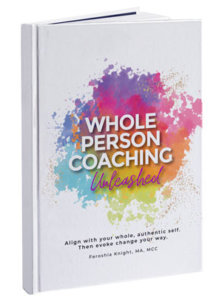Power of positivity, inside & out
Positive Psychology teaches that having a positive mindset can lead us to more favorable outcomes. Yet it’s also essential to realize that the more your brain creates optimistic associations with stimuli, the more resilient we become.
In an article entitled, Seven Ways Neuroscience-Based Coaching Can Give You The Edge In 2021, Dr. Arthi S Rabikrisson laid out the specific benefits of such an outlook…
“It is a simple formula — a positive attitude results in consistently more positive outcomes. That is because the brain creates associations with both positive and negative stimuli. If your brain habitually creates optimistic associations with stimuli, it increases your resiliency to negative states of chronic stress, anxiety and depression. Knowing how to incrementally nurture positive associations regardless of the situation at hand means you are well equipped to tackle that constructively, potentially with more pleasing outcomes than expected.”
Many people believe in the notion that, “everything happens for a reason.” This is a perfect example of assigning a positive outlook to adversity.
As a Whole Person Coach, you can help your clients shift their thinking toward building a more positive outlook and more positive relationships. However, thinking positive about yourself, others, and the world is one thing. It becomes real once you learn how to access and feel it within your body. That is when you come to know the felts sense of positivity in your body.
Here are three ways that you can build up this “super power” in yourself and your clients:
- Recall a warm memory. Perhaps of something or someone that really brings you to life. Inside your mind paint the whole picture. Visualize who was there and what was happening. In your mind’s eye try to recall the words or sounds of peoples voices, even your own. As you draw upon this memory in full-sensory detail – bring your attention to your body. What sensations are arising? Do you feel warm? Do you feel tingling or any other sensation near your heart or elsewhere?
- Bring this practice to your everyday experiences. When you notice that you are entering a state of happiness, joy, success or any positive emotion or feeling, bring your attention to your body.
- Make a list of the positive experiences you have throughout your day and how they made you feel in your body.
Remember the body participates in your experiences and when you give listen in, you can amplify your capacity to feel good inside and out in your life.
Having an expanded perspective leads to a more open mindset. It is one of the key tools that enables us to see what’s missing, both in specific moments and our lives as a whole!
Neuroscience teaches that you can create a more complete picture when you expand what you are “sensing.” It’s a practice that leads to additional and often more accurate information. This ultimately produces greater understanding.
Yet we are often caught in either a left-hemispheric perspective of getting stuck in the details or a right-hemispheric lens whereas we feel overwhelmed and chaotic lost in the big picture.
Stuck down into the details…
If someone is viewing themselves or a given situation from a more left-hemispheric perspective, it’s likely they will be more rigidly focused on something minute and miss out on additional details. That is how they are looking at what they are doing is so focused, that they stop being able to see how it all fits into the bigger picture, the end result they are seeking to create.
For example, in my marketing clients they find themselves lost in learning technology, vs seeing where their strengths lie from a more holistic point of view. After spending countless hours stuck in the details, they realize with a broader perspective that maybe it is worth investing in some tech help. Instead of doing it all, being at the helm of their business.
When we have more information, we can see the holes in our thinking – our blind spots. Without more perspective, our decisions and reactions don’t always pair with our reality accurately.
Stress is a huge factor…
For example, if you are prone to a lot of stress, your brain may naturally default to a more rigid or left-hemispheric reaction.
You might recognize this when you find yourself craving a checklist, a plan, a personal landing strip, or environmental conditions that help you feel in control. I’ve known people who have perfectly organized closets, with clothes that are grouped not just by season but also by color. It gives them peace of mind, no pun intended.
Yet, when this level of detail and organization leaves someone unable to move the needle on their desired changes, it’s time to contextualize their situation from a right-hemispheric perspective. That is the bigger picture.
As a Whole Person Coach, you invite your clients into a meaning-making process. Connecting them with the what and the why underneath the what they are doing in the moment. Shifting them from the details and enabling them to see the bigger picture. When someone is able to connect to the importance of what they are doing, they become motivated to shift into change. They can more easily let go of the analysis paralysis or over perfection that can occur.
Right-hemispheric folks often feel bored, constrained, and even stressed by too much planning or order. Because they can get overwhelmed holding onto the big picture, people who are in a right-hemispheric perspective can feel very chaotic and overloaded.
Working with these clients who are naturals in the big picture perspective, it can be helpful to first help them relax.
This might invite their mind to wander. Or to consider ways in which they could find solitude such as in nature and other wide open spaces. I’ve often found that walking my dogs and enjoying how they experience their world, largely through smell, unwinds my mind so I can rethink through my challenges and executive on my opportunities.
As a Whole Person Coach, you work with the whole of who your clients are.
From a Whole-Brain approach this means helping your client to balance the use of their whole brain and to recognize what kind of thinking mode or perspective they are operating from.Through questions, reflections and even with silence you can help people to truly know themselves and how they function best.
And this helps them to be unstoppable in achieving their goals, and you the instrument of change that helped them to do so!



